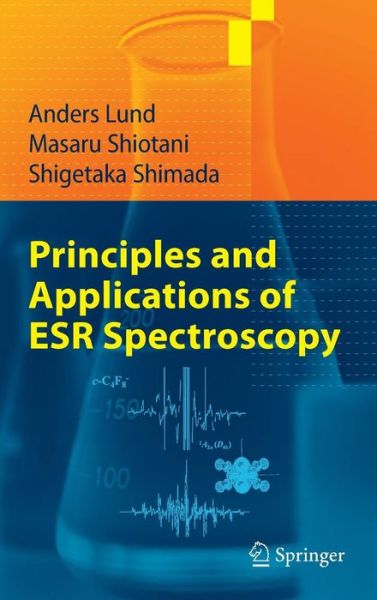
Tell your friends about this item:
Radicals on Surfaces - Topics in Molecular Organization and Engineering 1995 edition
Anders Lund
Radicals on Surfaces - Topics in Molecular Organization and Engineering 1995 edition
Anders Lund
Studies of free radicals on surfaces are of interest for several reasons: the spontaneous or stimulated formation of radicals from adsorbed molecules may represent one possible mechanism for heterogeneous catalysis.
Marc Notes: Includes bibliographical references and index. Table of Contents: I: Properties of Catalytic Surfaces 1.- 1.1 EPR Characterization of Oxide Supported Transition Metal Ions: Relevance to Catalysis.- 1.2 Study of Catalytic Site Structure and Diffusion of Radicals in Porous Heterogeneous Systems with ESR, ENDOR and ESE.- 1.3 Theoretical Studies of Core Ionization, Excitation and De-excitation of Adsorbates.- II: Structure and Reactivity of Radicals on Surfaces 87.- II. 1 Electron Magnetic Resonance of Aromatic Radicals on Metal Oxide Surfaces 89.- II.2 ESR Studies of Organic Radical Cations in Zeolites.- II.3 Surface Trapped Electrons on Metal Vapour Modified Magnesium Oxide. Nature of Surface Centres and Reactivity with Adsorbed Molecules.- II.4 Radicals on Surfaces Formed by Ionizing Radiation.- II.5 Photostimulated Formation of Radicals on Oxide Surfaces.- III: Trends in Modern Techniques 227.- III. 1 Fourier Transform Electron Paramagnetic Resonance Studies of Photochemical Reactions in Heterogeneous Media.- III.2 Muon Spin Resonance of Radicals on Surfaces.- III.3 Investigation of Radical Ions with Time-Resolved Surface Enhanced Raman Spectroscopy. Publisher Marketing: Studies of free radicals on surfaces are of interest for several reasons: the spontaneous or stimulated formation of radicals from adsorbed molecules may represent one possible mechanism for heterogeneous catalysis. In some cases the radicals are ionic, indicating that primary oxidation and reduction reactions occur. Radicals can also be used as probes to investigate diffusion processes on catalytic surfaces. The first direct observations were made more than 30 years ago, but detailed studies of structure, reactions and mobility have only recently become feasible with the advent of powerful spectroscopic techniques, to a great extent developed and used by the contributors to this volume. This comprehensive review describes new trends in the field. Leading experts write about the nature of surface active sites, methods to identify them, and the radicals formed from adsorbed molecules interacting with the surface. The emphasis is on the fundamentals covering thermal, photostimulated and radiation induced reactions as well as diffusion processes. This provides the necessary background for technological applications. This book will be useful to those who are interested in surface chemistry, heterogeneous catalysis as well as those who want to study reactive intermediates in chemical reactions. It is also of interest to scientists in photo and radiation physics and chemistry.
| Media | Books Hardcover Book (Book with hard spine and cover) |
| Released | January 31, 1995 |
| ISBN13 | 9780792331087 |
| Publishers | Springer |
| Pages | 318 |
| Dimensions | 170 × 244 × 19 mm · 612 g |
| Editor | Lund, A. |
| Editor | Rhodes, C.J. |


![Cover for Anders Lund · EPR of Free Radicals in Solids II: Trends in Methods and Applications - Progress in Theoretical Chemistry and Physics (Paperback Book) [2nd ed. 2012 edition] (2015)](https://imusic.b-cdn.net/images/item/original/507/9789400793507.jpg?anders-lund-2015-epr-of-free-radicals-in-solids-ii-trends-in-methods-and-applications-progress-in-theoretical-chemistry-and-physics-paperback-book&class=scaled&v=1480805020)
![Cover for Anders Lund · EPR of Free Radicals in Solids I: Trends in Methods and Applications - Progress in Theoretical Chemistry and Physics (Paperback Book) [2nd ed. 2013 edition] (2014)](https://imusic.b-cdn.net/images/item/original/273/9789401785273.jpg?anders-lund-2014-epr-of-free-radicals-in-solids-i-trends-in-methods-and-applications-progress-in-theoretical-chemistry-and-physics-paperback-book&class=scaled&v=1480805020)
![Cover for Anders Lund · Applications of EPR in Radiation Research (Hardcover Book) [2014 edition] (2014)](https://imusic.b-cdn.net/images/item/original/157/9783319092157.jpg?anders-lund-2014-applications-of-epr-in-radiation-research-hardcover-book&class=scaled&v=1480805020)
![Cover for Anders Lund · Principles and Applications of ESR Spectroscopy (Paperback Book) [2011 edition] (2014)](https://imusic.b-cdn.net/images/item/original/869/9789400789869.jpg?anders-lund-2014-principles-and-applications-of-esr-spectroscopy-paperback-book&class=scaled&v=1480805020)
![Cover for Anders Lund · EPR of Free Radicals in Solids II: Trends in Methods and Applications - Progress in Theoretical Chemistry and Physics (Hardcover Book) [2nd ed. 2012 edition] (2012)](https://imusic.b-cdn.net/images/item/original/866/9789400748866.jpg?anders-lund-2012-epr-of-free-radicals-in-solids-ii-trends-in-methods-and-applications-progress-in-theoretical-chemistry-and-physics-hardcover-book&class=scaled&v=1432485996)
![Cover for Anders Lund · EPR of Free Radicals in Solids I: Trends in Methods and Applications - Progress in Theoretical Chemistry and Physics (Hardcover Book) [2nd ed. 2013 edition] (2012)](https://imusic.b-cdn.net/images/item/original/927/9789400748927.jpg?anders-lund-2012-epr-of-free-radicals-in-solids-i-trends-in-methods-and-applications-progress-in-theoretical-chemistry-and-physics-hardcover-book&class=scaled&v=1480805020)
![Cover for Anders Lund · Radical Ionic Systems: Properties in Condensed Phases - Topics in Molecular Organization and Engineering (Paperback Book) [Softcover reprint of the original 1st ed. 1991 edition] (2012)](https://imusic.b-cdn.net/images/item/original/687/9789401056687.jpg?anders-lund-2012-radical-ionic-systems-properties-in-condensed-phases-topics-in-molecular-organization-and-engineering-paperback-book&class=scaled&v=1480805021)
